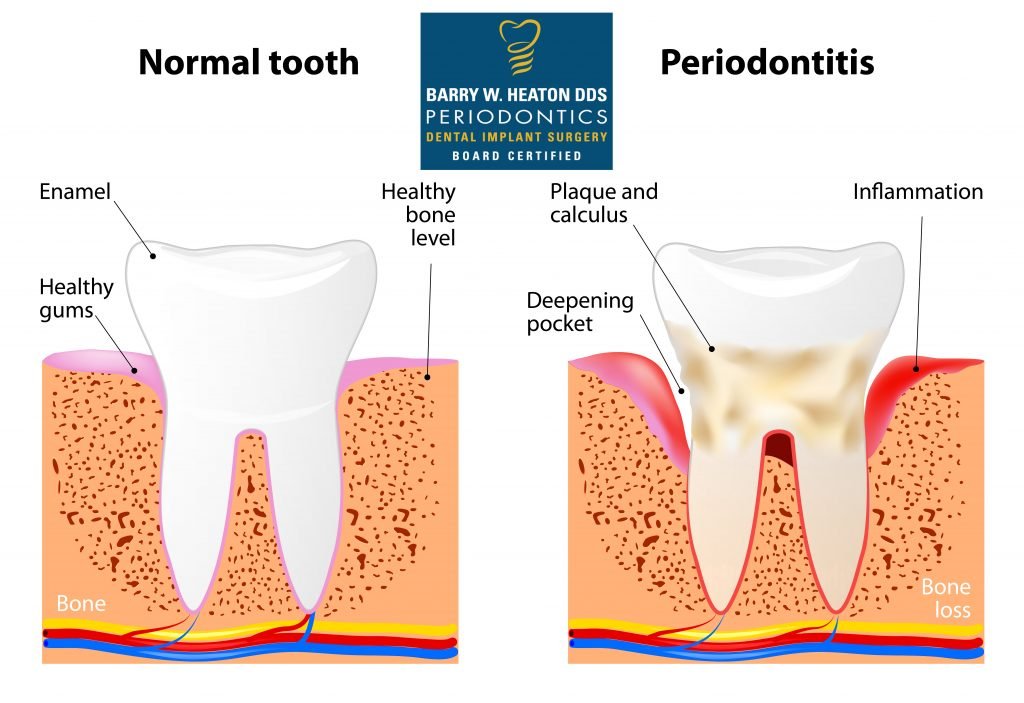
What is periodontal disease?
Periodontal disease is a chronic inflammatory disease of the gum and bone tissue that hold the teeth in the mouth.
What causes periodontal disease?
The primary cause of periodontal disease is specific bacteria that get under the gum tissue. If not cleaned out, these bacteria start an inflammatory process that, if left untreated, can result in bone loss and possible tooth loss.
Types of periodontal disease
Gingivitis – The earliest stage of periodontal disease. The gums are inflamed, but the inflammation has not started to affect the bone yet. The early stage will exhibit red gum tissue that will bleed when brushing or flossing. If diagnosed at an early stage, the treatment involved is cleaning around and just under the gums.
Periodontitis – If gingivitis is left untreated, inflammation progresses deeper into the bone. This results in bone loss. The symptoms are the same as gingivitis. There will be redness in the gums and bleeding when tooth brushing or flushing. Additionally, there may be drainage from the bone loss areas. Some patients will have a bad taste or a bad odor. In the later stages of bones loss, the teeth will become loose which will necessitate tooth removal.
How is periodontal disease diagnosed?
Periodontal Disease Diagnosis – The diagnosis of periodontal disease is primarily done by physical probing or measuring the depths of periodontal pockets. Visual assessment of the gums and bleeding from the gum line is done. The periodontal exam will also evaluate any tooth mobility that is present. Radio graphs are necessary to get a visual assessment of the bone.
How is periodontal disease treated?
Periodontal Disease Treatment – As with anything that effects the human body, the earlier a periodontal diagnosis can be made, the easier the treatment. Gingivitis can often be treated by a thorough cleaning and diligent brushing and flossing by the patient. As periodontal disease progresses, treatment becomes more extensive and involved. With today’s advanced technology, treatment of all but the most severe cases will be possible.
What is the maintenance phase of periodontal disease?
Periodontal Disease Maintenance – Once the active phase of periodontal treatment is completed, an equally important part of treatment is the maintenance phase. The success of periodontal treatment and procedures is high if the periodontal maintenance recommendations are closely followed by the patient. Many times, the patient will alternate between the general dentist and the periodontist. Just as important is what the patient does at home. Keeping the teeth and gums clean daily using the prescribed techniques will remove bacteria that could cause disease recurrence. We work closely with your general dentist to maintain your mouth in a state of optimum health.
When should I see a periodontist?
Periodontal Disease Maintenance – If a patient has bleeding that occurs when flossing or brushing, they should immediately seek an exam with a periodontist. A visual observation in the mirror of inflammation or red and swollen gums is another danger sign. If a patient will come in at the earliest sign of these symptoms, treatment will be easier with a higher success rate.
